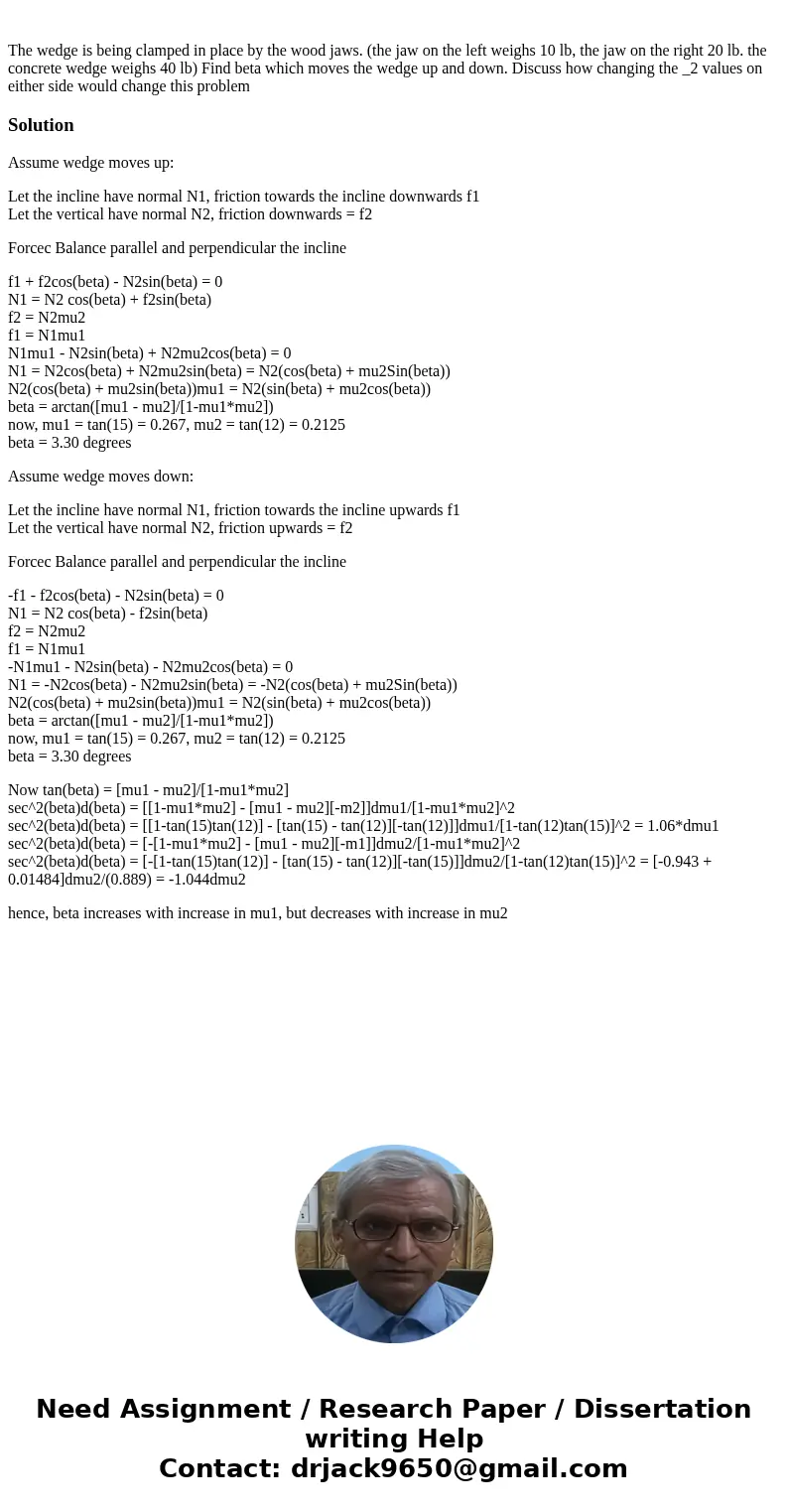The wedge is being clamped in place by the wood jaws the jaw
Solution
Assume wedge moves up:
Let the incline have normal N1, friction towards the incline downwards f1
Let the vertical have normal N2, friction downwards = f2
Forcec Balance parallel and perpendicular the incline
f1 + f2cos(beta) - N2sin(beta) = 0
N1 = N2 cos(beta) + f2sin(beta)
f2 = N2mu2
f1 = N1mu1
N1mu1 - N2sin(beta) + N2mu2cos(beta) = 0
N1 = N2cos(beta) + N2mu2sin(beta) = N2(cos(beta) + mu2Sin(beta))
N2(cos(beta) + mu2sin(beta))mu1 = N2(sin(beta) + mu2cos(beta))
beta = arctan([mu1 - mu2]/[1-mu1*mu2])
now, mu1 = tan(15) = 0.267, mu2 = tan(12) = 0.2125
beta = 3.30 degrees
Assume wedge moves down:
Let the incline have normal N1, friction towards the incline upwards f1
Let the vertical have normal N2, friction upwards = f2
Forcec Balance parallel and perpendicular the incline
-f1 - f2cos(beta) - N2sin(beta) = 0
N1 = N2 cos(beta) - f2sin(beta)
f2 = N2mu2
f1 = N1mu1
-N1mu1 - N2sin(beta) - N2mu2cos(beta) = 0
N1 = -N2cos(beta) - N2mu2sin(beta) = -N2(cos(beta) + mu2Sin(beta))
N2(cos(beta) + mu2sin(beta))mu1 = N2(sin(beta) + mu2cos(beta))
beta = arctan([mu1 - mu2]/[1-mu1*mu2])
now, mu1 = tan(15) = 0.267, mu2 = tan(12) = 0.2125
beta = 3.30 degrees
Now tan(beta) = [mu1 - mu2]/[1-mu1*mu2]
sec^2(beta)d(beta) = [[1-mu1*mu2] - [mu1 - mu2][-m2]]dmu1/[1-mu1*mu2]^2
sec^2(beta)d(beta) = [[1-tan(15)tan(12)] - [tan(15) - tan(12)][-tan(12)]]dmu1/[1-tan(12)tan(15)]^2 = 1.06*dmu1
sec^2(beta)d(beta) = [-[1-mu1*mu2] - [mu1 - mu2][-m1]]dmu2/[1-mu1*mu2]^2
sec^2(beta)d(beta) = [-[1-tan(15)tan(12)] - [tan(15) - tan(12)][-tan(15)]]dmu2/[1-tan(12)tan(15)]^2 = [-0.943 + 0.01484]dmu2/(0.889) = -1.044dmu2
hence, beta increases with increase in mu1, but decreases with increase in mu2

 Homework Sourse
Homework Sourse